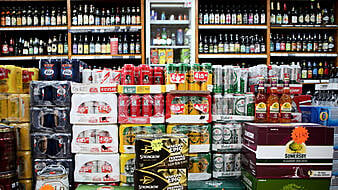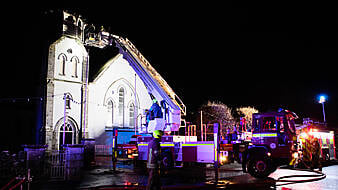Updated at 4.18pm
Cases of sexually transmitted infections (STIs) have seen an increase of 23 per cent in 2022 compared to 2019, according to new data from the Health Protection Surveillance Centre's (HPSC).
Gonorrhoea rates have increased by 45 per cent and chlamydia by 20 per cent, while Early Infectious Syphilis (EIS) rates have remained relatively stable.
The HPSC said there are a number of factors contributing to this, including the return to normal after Covid-19 pandemic restrictions were lifted.
Another significant factor has been improvements in access to testing. The free HSE STI home testing service, is available for all 17 years of age and older living anywhere in Ireland who can order a test online.
Speaking about the data, professor Fiona Lyons, medical director with HSE said: “The home testing service has really improved access to testing no matter where people live. It is convenient to use and is proving very popular with the public.
"This has led to an increase in detection of STIs, and we estimate now that more than one third of all chlamydia cases and nearly a quarter of gonorrhoea cases were detected via this testing service in 2022.
“STIs are common, particularly chlamydia, herpes and gonorrhoea, and increases have been seen throughout the country. However, some communities and key populations are especially affected. STIs continue to disproportionately affect gay, bisexual and other men who have sex with men (gbMSM), and young people less than 25 years of age.”
Dr Derval Igoe, specialist in Public Health Medicine with the HPSC said: “Consistent condom use, particularly when changing partners, is key for prevention. So too is availing of testing following unprotected sex, which helps in early detection and treatment and prevents passing on infection to others.”
They said groups most affected by STIs were young people aged (15 to 24 years), and gay bisexual and other men who have sex with men.
Two fifths of all STIs notified in 2022 were in people aged less than 25 years of age.
Since 2019, STIs in females aged 15–19 years decreased by 6 per cent: the chlamydia rate decreased by 8 per cent and the gonorrhoea rate increased by 23 per cent.
In females aged 20–24 years STIs increased by 34 per cent: the chlamydia rate increased by 35 per cent and the gonorrhoea rate increased by 75 per cent.
For males aged 15-19 years, rates increased by 8 per cent: the chlamydia rate decreased by 11 per cent and the gonorrhoea rate increased by 44 per cent.
The STI rate for males aged 20-24 years increased by 17 per cent, while the chlamydia rate increased by 6 per cent, while the gonorrhoea rate increased by 56 per cent.
The HSPC said some STIs have disproportionately affected gbMSM. In 2022 (where mode of transmission was known), they accounted for: 100 per cent of lymphogranuloma venereum (LVG); 99 per cent of monkeypox; 84 per cent of early infectious syphilis (EIS) and 71 per cent of gonorrhoea
Gonorrhoea notifications in gbMSM where mode of transmission was known increased by 50 per cent in 2022 compared to 2019.







